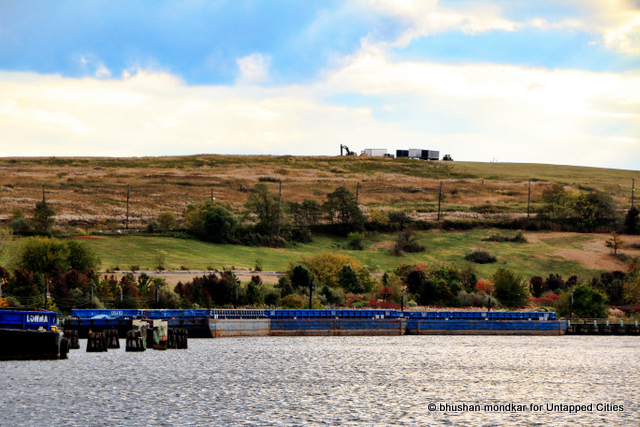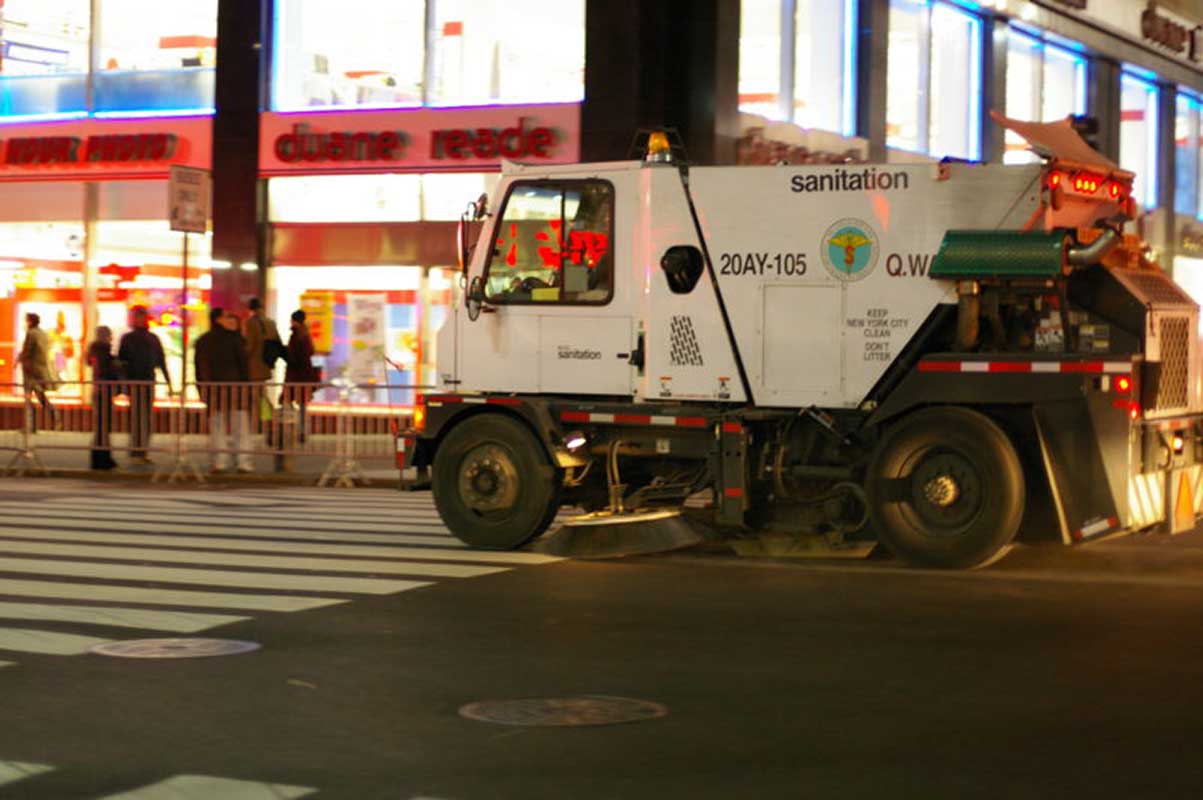Kathryn Garcia, the New York City sanitation commissioner wants to see the city produce zero waste by 2030. If she and her 10,000-strong department can reach that goal, it will be a stunning turnaround from the 1980s, when New York City became one of the last major cities to adopt a recycling program.
To open its yearlong “Getting to Zero: New York + Waste” series of events, Open House New York invited Garcia and Kate Ascher, author of The Works, to speak about how the city is working toward zero, and what more needs to be done.
Each New Yorker discards about 25 pounds of trash per week, working out to 6 million tons for the whole city per year. It’s a vast infrastructure network that, as Garcia notes, we don’t notice as long as it’s functioning smoothly. It’s only when the garbage bags begin piling up into curbside mountains, after a heavy snow storm for example, that New Yorkers really begin to grouse.
 Freshkills Park
Freshkills Park
For most of New York City’s history, waste was simply dumped into the street and then pushed out into the rivers and harbors. By the dawn of the 20th century, waste incineration become more and more popular, peaking in the 1960s when 11 incinerators burned around a third of the city’s trash, sometimes converting it into energy.
In the 1940s, the Freshkills landfill on Staten Island was designed as a temporary solution to a fast-growing and fast-dumping metropolis. It had no accounting for standard landfill bugbears like seagulls, methane emissions and leachate. At its height, it took 20 barges to carry 1300 tons of trash per day. It closed in 2001 and is now in the decades-long process of being converted into the borough’s largest park.
The city began its recycling program in earnest in the late 1980s to treat some waste materials more as a resource. Garcia has some theories about why New York City was so late to the recycling game – investments in certain infrastructures were already sunk, for example – but we certainly had quite a ways to go on that front, and are still catching up.
 Newtown Creek Digester Eggs.
Newtown Creek Digester Eggs.
Today, the city’s waste is principally handled through a system of private transfer stations that deliver waste by tractor trailer or barge to six receiving states as far as South Carolina, 650 miles away. New York pays these receiving sites handsomely for the inconvenience. Recyclables are sorted by material and sold in bulk.
Eventually, the sanitation department’s goal is for single-stream recycling: paper mixed with glass, metals, and plastic. It’s easier for consumers to not have to worry about sorting and the receiving facilities already have to do a lot of sorting anyway (thanks partly to lazy or ill-informed recyclers).
Of the five boroughs, Staten Island has the most perfect closed recycling system, meaning it uses a higher proportion of its recycled waste itself. A factory there converts the borough’s paper refuse into pizza boxes.
The sanitation department (DSNY) also plans to expand the organics collection program which is currently offered only in about an eighth of the city’s neighborhoods (recognizable by the smaller orange/brown collection bins) and divert more of it to anaerobic digesters (like the Newtown Creek eggs) for natural gas generation. In the meantime, those who want to recycle their old coffee grounds and banana peels can visit one of the 225 community compost sites and 87 food waste drop-off sites.
Just last month saw a major setback for another of the agency’s big fights: Governor Cuomo killed the 5-cent plastic bag fee, just days before it was to go into effect. Cuomo thought the fee (which was to be paid to retailers, not collected as a tax) was too big a giveaway to businesses. But as Garcia notes, cities that have passed similar laws (Los Angeles, Washington, D.C., San Francisco) have seen consumer behavior change quickly – people just start bringing their own bags. Plastic bags and styrofoam, another material DSNY is trying to eliminate from the waste stream, clog the sorting machines and are much harder to recycle than their manufacturers would have you believe.
But perhaps the biggest hurdle DSNY has faced in its push for zero is community opposition to the siting and construction of new facilities. For years Upper East Siders have been fighting the agency’s decision to site a marine transfer station at East 91st Street on the East River. NIMBYs argue the station will exacerbate local air quality with truck and waste emissions.
 The Spring Street Salt Shed was a major design coup for DSNY
The Spring Street Salt Shed was a major design coup for DSNY
But the transition to barge and rail transportation of the city’s waste is actually projected to cut the city’s annual greenhouse gas emissions by 34,000 tons and truck travel by 60 million miles. To achieve that, the Upper East Side facility is part of a plan for a total of four marine transfer stations – two of which are complete, one on Queens’ north shore and one near Brooklyn’s Gowanus Canal.
While DSNY is winning the Upper East Side fight for now, one important lesson it has learned with another facility on lower Manhattan’s West Side is that good design helps. Since it opened its Dattner Architects/WXY architecture + urban design‘s Spring Street Salt Shed two years ago, the iceberg-shaped concrete form has become a tourist draw and backdrop for glossy photoshoots. Perhaps by getting New Yorkers to appreciate the glamorous side of garbage, Garcia and her team can get us to recycle more, reuse more, and eventually, reduce to zero.
Next, read about the Top 10 Secrets of the NYC Department of Sanitation.






